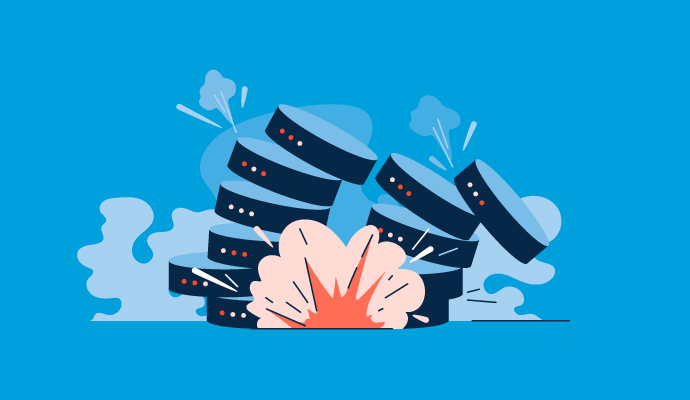Why Data Destruction is a Vital Element of Comprehensive Cyber Security
Why Data Destruction is a Vital Element of Comprehensive Cyber Security
Blog Article
Checking Out the Importance of Information Destruction in the Context of Computer Security Providers and Protecting Confidential Information
In an age where information violations are increasingly usual, the value of efficient information devastation can not be overstated. What techniques can companies carry out to boost their information destruction protocols?
Recognizing Information Damage
Data devastation is a vital part of computer protection that includes the irreversible elimination of information from storage space devices to stop unauthorized accessibility and potential data violations. In an increasingly electronic landscape, organizations face increased dangers connected with sensitive information being incorrectly accessed or exploited. Efficient information damage safeguards against these threats, making certain that private dataâEUR" such as customer info, intellectual residential property, and financial recordsâEUR" can not be recovered after disposal.
Understanding the relevance of data damage extends past mere conformity with lawful and regulatory frameworks; it is vital for keeping business integrity and count on. When information is improperly taken care of or inadequately ruined, the consequences can be extreme, consisting of financial loss, reputational damage, and legal liabilities.

Methods of Data Removal
One prevalent approach is data wiping, which includes overwriting existing information with arbitrary patterns multiple times. This method makes the initial information irretrievable, making it a preferred option for organizations looking for to secure personal info.
Another approach is degaussing, which uses a powerful electromagnetic field to disrupt the magnetic domains on storage devices, efficiently removing the data. This approach is particularly reliable for magnetic media however is not appropriate to solid-state drives.
Physical devastation is one more durable method, entailing the shredding or crushing of storage tools. This approach warranties that data recuperation is essentially difficult, making it suitable for highly sensitive information.
Lastly, encryption can work as a corresponding method to information obliteration. By encrypting data before removal, organizations can include an extra layer of safety, guaranteeing that even if remnants are recovered, they continue to be inaccessible without the decryption key. Each approach must be picked based upon the degree of information sensitivity and the certain security needs of the organization.
Legal Conformity and Data Safety
Organizations need to navigate an intricate landscape of lawful needs connected to information safety, especially after implementing approaches of data obliteration. Numerous guidelines, such as the General Data Security Guideline (GDPR) and the Medical Insurance Portability and Accountability Act (HIPAA), enforce rigorous guidelines on exactly how organizations have to get rid of and handle of sensitive information. Failure to follow these guidelines can lead to significant legal effects, consisting of significant fines and reputational damage.
Data devastation processes must be diligently documented to show conformity with suitable regulations and criteria. This documentation not just serves as proof of adherence to lawful commitments yet additionally highlights a dedication to safeguarding delicate information. Organizations ought to additionally develop clear plans regarding information retention and destruction timelines, making certain that data is not held longer than necessary.

Moreover, regular audits and analyses of information destruction techniques are necessary to preserve conformity and adapt to developing lawful structures (data destruction). By proactively addressing lawful needs, companies can reduce threats home linked with information breaches and show their dedication to data safety and security. Ultimately, focusing on lawful compliance in information devastation procedures is not just a regulative responsibility, but a basic aspect of a durable data safety and security technique
Effect On Organization Reputation
The track record of an organization can be considerably impacted by its approach to information damage and administration. In today's digital landscape, where data violations can occur anytime, the failure to correctly get rid of delicate info can result in severe effects. Organizations that inadequately manage information devastation threat exposing private consumer info, which not just breaches personal privacy legislations but additionally deteriorates trust fund amongst stakeholders and clients.
A ruined track record can lead to reduced customer commitment, as clients come to be hesitant to involve with a company that has shown carelessness in shielding their information. Negative publicity surrounding an information violation can have a long lasting result, as potential clients could be hindered by the perceived lack of safety. This can result in a straight decline in income and market share.
In addition, companies that prioritize data damage as part of their protection approach can improve their reputation by showcasing their commitment to safeguarding sensitive information. By taking on rigorous data management practices, organizations can not just mitigate threats but also place themselves as credible entities in their more information particular industries, consequently strengthening their general brand name picture.

Finest Practices for Secure Disposal
Applying ideal techniques for safe and secure disposal of data is necessary for reducing threats linked with data violations and ensuring conformity with personal privacy guidelines. Organizations ought to adopt a detailed information disposal plan that lays out procedures for both electronic and physical data destruction.
For physical data storage devices, such as hard drives, shredding or degaussing is recommended to avoid data healing. Additionally, companies need to keep a chain of custodianship documentation throughout the disposal procedure, making sure responsibility and traceability of disposed items.
For electronic data, using software program that abides by market requirements for data wiping is crucial. This software program needs to overwrite existing data several times, making recovery virtually impossible. It is also essential to confirm the efficiency of the data damage process with audits or third-party analyses.
Educating staff members on safe and secure disposal methods adds another layer of safety and security, as human error can explanation usually result in data direct exposure. Regularly upgrading and assessing disposal plans guarantees placement with progressing policies and technological innovations. By executing these finest methods, companies can substantially minimize the threat of unapproved data accessibility and improve their total information defense approach.
Conclusion
Finally, information devastation is a fundamental aspect of computer system safety services that guarantees the defense of secret information from unauthorized accessibility. Carrying out effective techniques of data obliteration, adhering to legal compliance, and acknowledging the influence on company reputation are essential components of an extensive data safety and security strategy. By taking on best methods for protected disposal, organizations can promote trust with clients and secure delicate data, eventually adding to an extra protected electronic landscape.
In an age where information breaches are progressively common, the relevance of effective data destruction can not be overemphasized.Information devastation is a vital part of computer safety that involves the long-term elimination of information from storage space tools to prevent unapproved access and potential data breaches. Organizations needs to additionally establish clear plans regarding information retention and destruction timelines, making certain that information is not held longer than essential.
By proactively resolving lawful needs, companies can minimize risks connected with information violations and show their dedication to information safety (data destruction). Eventually, focusing on lawful conformity in data devastation processes is not simply a regulative obligation, yet a basic facet of a robust data safety technique
Report this page